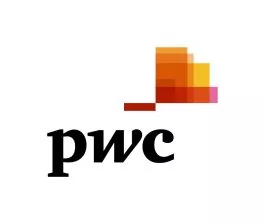Supply chain touches almost every aspect of operations within a company: from forecasting customer demand, to sourcing raw materials, to manufacturing, distribution and returns.
As a result, it can account for anywhere from 30% to 70% of a business' overall cost base. "It has to be on your radar screen from a cost perspective," says Lino Casalino, national leader, supply chain and procurement, PwC. "And it is for many private company leaders, but supply chain also represents an opportunity to propel top-line growth—and that's a perspective not widely shared. For example, if you are a retailer and don't have products on the shelf, you're out of stock and have missed a sale. A lot of companies think of supply chain as a cost centre. They don't always see it as helping to funnel top-line growth."
Part of the problem lies in the complexity of supply chain management. During a recent PwC webinar, Challenge meets opportunity: Maximizing cost-effectiveness and minimizing risk in your supply chain, private company leaders shared their concerns. When asked what part of the supply chain carries the most risk and presents the most difficult challenges, almost a quarter (20%*) of participants said all of the five key components of the supply chain—plan, buy, make, deliver and return—gave them cause for concern. And 40% cited planning specifically, which includes demand forecasting, supply planning, sales and operations, as problematic.
"The responses were not surprising," says Brian Habjan, director, supply chain and procurement, PwC. "The holy grail of supply chain is to align supply and demand. You want to get the right product at the right place at the right time, ideally at the best price. To do that you have to understand your customer demand patterns and you have to make sure you are planning, producing and distributing those products when your customers need them. It's a cross-functional challenge with many moving parts, but if you get it right, an effective, integrated supply chain can be a significant competitive advantage."
- The starting point is making sure you understand the corporate strategy and objectives and then determine how the supply chain can effectively support the strategy. For example, if one of the corporate objectives is cost reduction, then what can be done across the supply chain to help reduce costs? What capabilities do you need when it comes to the five key components of supply chain management from a people, process and technology perspective to deliver on that strategy? Understanding how and where money is spent across the organization (both internally and externally with vendors) will allow you to identify and target the cost reduction opportunities. Sometimes, underinvestment in certain areas and capabilities is also an issue.
- When the corporate strategy is to focus on top-line growth, start with the customer and work your way back through the supply chain. Identify the more profitable products/services and organize your supply chain strategy around those components. "The goal is to effectively provide high service levels to your most profitable customers with your most profitable products versus treating everyone the same," says Casalino. "Focus on the customer, markets and channels so you can determine how your supply chain can drive profitable growth into those areas."
- Each of the five components of supply chain management
offers an opportunity for process, people or technology improvement
leading to cost reduction or growth, cost reduction or
growth. Do an evaluation and prioritize the key areas you
want to focus on. For example, sales and operations planning will
allow you to align supply and demand and help drive top-line
growth. Strategic sourcing and procurement will help you reduce
costs and get a better return on your spend with vendors to reduce
the bottom-line and increase service levels. "In most of the
projects we've done, 40% to 50% of the cost reduction value
comes in this area," says Habjan.
"In industries where returns are an issue, establish a formal returns channel to increase transparency and efficiency and invest in a returns prevention program. It's not just about being good at taking items back, but being strategic in terms of preventing returns from happening as a starting point. Provide information to your customers on your website or at the point of sale to help answer questions and prevent customers from having buyers' remorse (a primary cause of returns in some industries such as electronics). This is an opportunity for an immediate return on investment." - Consider outsourcing components of the supply
chain. "If it's not a core competency or can be
managed more effectively by an outside firm, then outsourcing
should be on your radar," says Casalino. "Many companies
outsource the logistics piece but we are also seeing some companies
outsource procurement, for example. Procurement and strategic
sourcing are critical to ensure effectiveness and can deliver
significant savings."
"How you manage your supply chain plays a critical role in the success of your company. The key to having an effective and efficient supply chain and to increase margin (top and bottom-line growth) is to make sure the components within supply chain are integrated and that your supply chain strategy is aligned with the overall company strategy," says Casalino. "Supply chain management is a cross-functional challenge, but often it is siloed into individual departments for procurement, logistics, and manufacturing, for example, with little or no interaction with other functions such as sales, finance and operations. Within the supply chain, there should be a single point of accountability with supporting metrics. You need someone who can tie it all together. You need that person to be part of a larger cross-functional team to ensure business objectives are being met. Everything should be strategically designed end-to-end, which will allow you to identify opportunities, reduce costs and drive growth."
The content of this article is intended to provide a general guide to the subject matter. Specialist advice should be sought about your specific circumstances.


